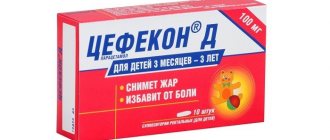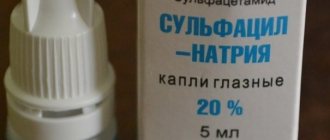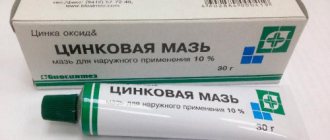Good day, dear readers. You may have heard more than once that for full development you need to consume a certain amount of vitamins and minerals. It is not surprising when parents of infants have a question, “what vitamins do children need at this age?” or “is what the baby gets through breast milk or formula enough?” In this article we will look at what is responsible for what, what the daily dosage should be. Let's talk about what may indicate their overabundance. You will learn advice on how and what to give your child, and what vitamin complexes are acceptable.
Vitamins for children from birth
For the little ones, the iHerb has three popular multivitamin complexes in drops from well-known American manufacturers of premium products. Each such complex is highly bioavailable and has its own flavor.
Nature's Plus, Children's Sugar Free Liquid Multivitamin Drops, Orange Flavor, 2 fl oz (60 ml) Nature's Plus, Source of Life, Animal Parade, Baby Plex, Sugar Free Multivitamin Liquid Drops, Natural Orange Flavor, 2 fl oz (60 ml )
This complex is a purified liquid vitamin mixture specially developed by pediatricians for newborns and infants. The concentration of vitamins corresponds to the daily physiological needs of the baby. The complex is ideally balanced for maximum absorption, aimed at supporting the child's cellular system for optimal development during infancy.
The complex contains vitamin D (as calciferol is D2), which is prescribed to all children during periods of little sunshine to prevent rickets. Vitamin D 2 is a synthetic vitamin of plant origin. Vitamin D3 (cholecalciferol) is a “natural” form of vitamin D, considered more optimal for the human body, but vitamins D2 and D3 are similar in their effects in the human body.
An important plus in these drops is the content of choline (relatively classified as B vitamins). It is very important for children from prenatal age and immediately after birth.
Choline not only builds a strong brain, but also supports the functioning of its cells throughout life, which will affect the improvement of the child’s memory and intellectual abilities in the future. Breast milk contains enough of it, but formula does not, so these multivitamins are good for bottle-fed babies.
Should I give my baby vitamins?
Skip the information and go straight to the best vitamins for newborns and infants.
If the child is healthy and the mother who feeds him is also healthy, then the baby should have enough all the nutrients. If there is a slight deficiency of useful nutrients, pediatricians recommend first trying to adjust the mother’s diet and adding multivamin complexes to her diet. But there are situations when this will not help, and you will have to resort to pharmaceutical vitamin preparations.
- Seasonal vitamin D3 deficiency. This vitamin is produced by both mother and child during walks in the sun. In the autumn-winter period, and in some regions even all year round, there is not enough sun. Vitamin D3 is the most prescribed vitamin for newborns and infants.
- Unbalanced nutrition of mother and/or child. There can be many options here. The most common are allergic reactions during the introduction of complementary foods. In this case, the child’s nutrition becomes meager and monotonous in terms of incoming nutrients, and milk or formula is no longer able to fill the gaps. The same thing happens with “little eaters” who simply eat insufficient amounts of food. There are regional nutrient deficiencies, when some foods are scarce, for example, fish in the steppe regions or vegetables in the north.
- If a child does not gain weight well, he lags behind in development. Sometimes the problem turns out to be a simple vitamin deficiency. Nutrition correction and additional doses of vitamins make all the difference.
- Premature, often ill children have problems absorbing vitamins. Moreover, it can be difficult to say which problem is primary: a decrease in immunity “knocks down” normal metabolic processes or, conversely, failures in the synthesis and absorption of vitamins lead to a decrease in immunity.
Compound
Does not contain GMOs, sugar, dyes, yeast, wheat, soy and milk.
| Serving Size: 1 ml | |||
| Number of servings per package: 60 | |||
| Amount per serving | %DV for infants | % DV for children 12 months. | |
| Vitamin A (as palmitate) | 1500 IU | 100% | 60% |
| Vitamin C (as ascorbic acid) | 43.75 mg | 125% | 109% |
| Vitamin D (as calciferol) | 400 IU | 100% | 100% |
| Vitamin E (as d-alpha tocopherol) | 5 IU | 100% | 50% |
| Thiamine (Vitamin B-1) (as Thiamine HCl) | 0.625 mg | 125% | 89% |
| Riboflavin (vitamin B-2) | 0.75 mg | 125% | 94% |
| Nicotinic Acid (as Niacinamide) | 10 mg | 125% | 111% |
| Vitamin B6 (pyridoxine HCl in) | 0.5 m | 125% | 71% |
| Vitamin B-12 (as cyanocobalamin) | 2.5 mcg | 125% | 83% |
| Biotin | 25 mcg | 50% | 17% |
| Pantothenic Acid (as D-panthenol) | 3.75 mg | 125% | 75% |
| Choline (as bitartrate) | 3 mcg | † | † |
How to choose the right vitamins for children
It is necessary to study the composition of the drugs. At different stages of development, a child needs different nutrients, and their daily amount also changes. Teenagers are often prescribed adult dosages. Preschool children are recommended to take vitamins in reduced quantities.
Pay attention to indications and contraindications. In most cases, the only limitation for taking such drugs is hypersensitivity to the components contained in vitamin complexes. More often, negative reactions develop in preschool children.
Reviews
I'm taking it a second time. The child is delighted (it’s delicious) and asks for more. We didn’t take Aquadetrim, it contains vitamin D. It can be used for very young children, I gave it to them from 6 months. Inside the box there is a pipette with divisions. These products do not contribute to allergies, have a good taste and a fairly complete spectrum of vitamins.
Twinlab, Infant Care, Multi Vitamin Drops With DHA , 1 2/3 fl oz (50 ml)
The highlight of the complex from Twinlab is the content of docosahexaenoic acid (DHA) - an essential polyunsaturated fatty acid of the Omega-3 class , which is necessary for the normal development of the child’s heart, brain and eyes. In addition to DHA, the drops contain 10 recommended high-quality natural vitamins that do not exceed the daily value. Vitamin D - in bioavailable form D3 Cholecalciferol. It makes sense to choose this complex if a nursing mother’s diet lacks omega-3 fatty acids. Especially when it comes to women who follow a vegetarian diet. On the plus side, there is a wonderful composition of vitamins at an affordable price. The downside is that the drops have a strong orange taste.
Microelements in breast milk: what mother gives
Mother's milk contains all the nutrients, including microelements, necessary for the baby. They are released in a form convenient for the child - associated with carrier proteins, so they are well absorbed. If the baby does not take the breast, is capricious and cries, the mother needs to know the reasons for this behavior of the baby. The information in this article is specifically intended for this purpose.
Where do vitamins come from in a nursing mother's milk: from foods or medications? Breast milk is the best way to give vitamin D and other vitamins to infants. In terms of content and ease of absorption for the baby, mother's milk is superior to infant formula , but it has one significant drawback. To avoid the development of signs of vitamin deficiency in an infant, the mother’s body first secretes everything it needs with milk, and only then provides its own needs, thus, signs of deficiency conditions may already appear in the mother. In this case, you should take vitamins for nursing mothers as prescribed by your doctor.
Compound
Contains no artificial colors, flavors, sugar, sweeteners, fructose, honey, sorbitol, alcohol or preservatives.
| Serving Size: 1 ml | |||
| Number of servings per package: 50 | |||
| Amount per serving | %DV for infants | ||
| Vitamin A (as palmitate) | 1500 IU | 100% | |
| Vitamin C (as ascorbic acid) | 35 mg | 100% | |
| Vitamin D (as cholecalciferol) | 400 IU | 100% | |
| Vitamin E (as d-alpha tocopherol acetate) | 5 IU | 100% | |
| Thiamine (as thiamine hydrochloride) | 0.5 mg | 100% | |
| Riboflavin (vitamin B-2) | 0.6 mg | 100% | |
| Nicotinic Acid (as Niacinamide) | 8 mg | 100% | |
| Vitamin B6 (pyridoxine hydrochloride) | 0.4 m | 100% | |
| Vitamin B-12 (as cyanocobalamin) | 2 mcg | 100% | |
| Pantothenic Acid (as D-panthenol) | 3 mg | 100% | |
| DHA (docosahexaenoic acid) | 20 mg | † | |
Reviews
I decided to reinforce 6 months. child with vitamins, because I was seriously ill all winter and spring. I couldn’t find any complex vitamins for children under one year old on the Russian market. These vitamins can be given to children from birth (judging by the annotation). The vitamins actually have a bright orange color. The orange flavoring is designed to overcome the sour taste of ascorbic acid, which is why the color of the liquid is so bright. At first the child winced and spat out exactly everything that I poured into him. Then he began to open his mouth and swallow, but he didn’t stop wincing - it was really sour. There are no allergies to these vitamins, which is very valuable. I'm satisfied and will order regularly.
Zarbee's, Naturals, Baby, Multivitamins for 2 month olds. with Iron, Natural Grape Flavor, 59 ml Zarbee's, Naturals, Baby, Multivitamin, with Iron, Natural Grape Flavor, 2 fl oz (59 ml)
This complex contains 8 essential vitamins including A, C, D3 and Iron to meet your growing baby's needs and prevent anemia. Vitamin D - in bioavailable form D3 Cholecalciferol. A safe and effective product, recommended by pediatricians.
The package includes a convenient dispenser syringe. The taste of the vitamins is not as strong as in the previous product.
What to rely on when choosing
The child must first be shown to a doctor and undergo tests to determine exactly what substances he is lacking and whether he is lacking at all and what needs to be worked on. If you plan to take multivitamin complexes, then you don’t have to worry too much - the child’s body will simply “pull out” what it needs from the supplement and discard the rest. But if single medications are prescribed - vitamins A, E, D and K - then the dosage should be strictly observed. These fat-soluble substances tend to accumulate in tissues, which can lead to hypervitaminosis and the development of undesirable side effects.
Therefore, the most important thing when choosing is to evaluate not the cost and brand of vitamins, the degree of advertising and popularity, but their composition and the ratio of components. It is also important to strictly follow the dosage and regimen of supplements, otherwise complications cannot be avoided.
And the last point is the current problem. If everything is fine with the baby, but visual impairment is noticed, then you need to purchase special complexes for him to support the eyes. If the baby often gets colds, then supplements will be needed that work to activate the immune system. A small schoolchild who has suddenly received a high mental load will need a completely different composition of the vitamin complex. What are the best vitamins for children aged 7, what to give to a child over one year old, what supplements to improve vision - below.
Compound
Contains no yeast, wheat, soy, gluten, milk, artificial flavors, artificial colors, artificial sweeteners, honey, alcohol, magnesium stearate.
| Serving Size: 2 ml from included syringe | |||
| Number of servings per package: 30 | |||
| Amount per serving | %DV for infants | ||
| Vitamin A (as retinol palmitate) | 1500 IU | 100% | |
| Vitamin C (as ascorbic acid) | 35 mg | 100% | |
| Vitamin D (as cholecalciferol) | 400 IU | 100% | |
| Vitamin E (as D-alpha tocopherol) | 5 IU | 100% | |
| Thiamine (as thiamine hydrochloride) | 0.5 mg | 100% | |
| Riboflavin (vitamin B-2) | 0.6 mg | 100% | |
| Nicotinic Acid (as Niacinamide) | 8 mg | 100% | |
| Vitamin B6 (pyridoxine hydrochloride) | 0.4 m | 100% | |
| Vitamin B-12 (as cyanocobalamin) | 2 mcg | 100% | |
| Iron (as ferrous gluconate) | 10 mg | 67% | |
| Organic Agave Nectar | 1.7g | ||
| Grapefruit extract | 14 mg | ||
Types of vitamin preparations
Children's vitamins for immunity are available in the form of pills, chewable lozenges, powder and syrup.
- After one year, babies are given powders that can be dissolved in food or sweet syrups.
- Preschoolers chew lozenges and tablets with pleasure.
- Teenagers take pills and wash them down with water.
The pharmaceutical industry is constantly improving drugs. Several generations of vitamins differ in the complexity of their substances and the intensity of their effects:
- The first generation consists of one component. They are given to children who lack, for example, only ascorbic acid or retinol.
- Second-generation drugs are complexes of two or more components, often including microelements.
- The most modern medicines of the third generation - they contain not only vitamins and minerals, but also extracts of medicinal plants.
Reviews
My son has always had low hemoglobin, so to raise it from 106 to 122 I gave him our maltofer for almost six months. Then they took a break, during which hemoglobin dropped again to 102 units. We took these vitamins for a month, took a test, and the result was hemoglobin 128! To be honest, I didn’t even expect such a result. I ordered these vitamins again. Convenient dosage, take once a day with meals, the taste is pleasant, grapey, the child drank with pleasure and then licked the spoon. Our pediatrician praised the composition of the vitamins and said that they were very balanced and in the most digestible form. So if your baby is lacking iron, I recommend giving it a try!
The best iron supplements for babies
Iron deficiency is quite common in young children. The fact is that the content of this mineral in the blood greatly depends on the quality of nutrition and the general condition of the body. This element is not easily absorbed, but through complex chemical chains, and any disruption (stress, frequent illness, increased workload) can affect this process. In such a situation, doctors prescribe iron supplements, with the help of which the problem is solved quite quickly and effectively.
1. Ferrum Lek syrup 50mg/5ml fl. 100ml
The drug contains ferric hydroxide. The mineral in this form is inert in the stomach and is available only for active absorption within the intestine. This avoids negative and unproductive effects and increases the effectiveness of the drug. The drug is a syrup, sweet and pleasant to the taste. The packaging with the bottle includes a measuring spoon.
Advantages:
- does not irritate the gastric mucosa and does not cause unpleasant effects;
- effectively increases hemoglobin;
- Tastes good, kids drink well.
Flaws:
- Long-term use is required for the effect.
Customer Reviews
Larisa In 2 weeks, the child’s hemoglobin rose from 103 to 111, although he drinks and grimaces, sometimes spits it up, but it works.
Aliot The drug is made in the form of a syrup, sweet and pleasant to the taste. Therefore, the child drinks it with pleasure. About the effect - of course, it did not raise our hemoglobin significantly. But at least it kept it at the same level as our hemoglobin was, that is, the indicators did not fall.
Vitamins for children from 6 months
ChildLife, Essentials, Multi Vitamin & Mineral, Natural Orange/Mango Flavor , 8 fl oz (237 ml)
This complex is intended for children from 6 months to 12 years. Developed by Dr. Murray S. Clark, Licensed Acupuncturist and Doctor of Oriental Medicine. This product, in addition to basic vitamins, of which there are 12, contains 8 more minerals, vitamin-like factors - inositol and choline . Which ensures your child's healthy development, strong immunity, emotional and mental vitality. The dosage of most vitamins and minerals is within the daily norm. Inositol, together with choline, play an important role in the body: they are part of lecithin, without which normal functioning of the body is simply impossible. Lecithin is a building material for our cells.
It is one of the main components of cell membranes, protective membranes of the brain, muscle and nerve cells. There is very little calcium and magnesium; you can add them separately if your doctor insists. There is enough iodine and zinc. There is no iron, I consider this a plus, since it interferes with the absorption of calcium, magnesium and zinc, its intake should be separated from vitamin-mineral complexes. Liquid vitamins from ChildLife are orange in color with a pleasant orange-mango flavor.
The effect of vitamins on a child’s immunity
Some beneficial substances are characterized by antioxidant effects. Thanks to this, the destruction of vitamins and minerals slows down. As a result, the body receives a sufficient amount of nutrients.
This allows you to provide nutrition to the cells, which accelerates tissue restoration and normalizes the structure of cell membranes and vascular walls. This improves blood supply to organs. At the same time, metabolism is restored, the body's resistance to viruses, allergens, and bacteria increases.
Compound
Childlife uses only the highest quality ingredients. Contains no milk, eggs, wheat, yeast, peanuts, tree nuts, fish or shellfish. No artificial colors, flavors or sweeteners.
| Serving Size: 2 teaspoons (10 ml) | |||
| Number of servings per package: 24 | |||
| Amount per serving | %DV up to 4 years | %DV after 4 years | |
| Vitamin A (as vitamin A palmitate and beta carotene) | 1700 IU | 68% | 34% |
| Vitamin C (as ascorbic acid) | 135 mg | 338% | 225% |
| Vitamin D (as cholecalciferol) | 275 IU | 69% | 69% |
| Vitamin E (as d-alpha tocopherol acetate) | 20 IU | 200% | 67% |
| Thiamine (as Thiamine Hydrochloride) | 2 mg | 286% | 133% |
| Riboflavin (as Riboflavin 5-phosphate) | 2 mg | 250% | 118% |
| Nicotinic Acid (as Niacinamide) | 10 mg | 111% | 50% |
| Vitamin B6 (as pyridoxine hydrochloride) | 2 mg | 286% | 100% |
| Vitamin B-12 (as cyanocobalamin) | 6 mcg | 200% | 100% |
| Folic acid | 135 mcg | 68% | 34% |
| Biotin (as g-biotin) | 65 mcg | 43% | 22% |
| Pantothenic Acid (as D-panthenol) | 7 mg | 140% | 70% |
| Calcium (as calcium lactate) | 55 mg | 7% | 6% |
| Iodine (as potassium iodide) | 50 mcg | 71% | 33% |
| Magnesium (magnesium lactate) | 15 mg | 8% | 4% |
| Zinc (as zinc gluconate) | 5 mg | 63% | 33% |
| Selenium (as L-selenomethionine) | 35 mcg | † | 50% |
| Manganese (manganese gluconate as) | 1.5 mg | † | 75% |
| Chromium (as Chromium Polynicotinate) | 7 mcg | † | 6% |
| Potassium (as Potassium Citrate) | 15 mg | † | |
| Inositol | 20 mg | † | † |
| Choline (as bitartrate) | 20 mg | † | † |
Basics of developing immunity in children
Before you go to the pharmacy to buy vitamins for children, it is a good idea to understand how the immune system works. Selection criteria such as inexpensive, on the advice of a friend, according to buyers or a pharmacist, do not work. At best, another review about the complete uselessness of their product will appear on the manufacturer’s website. In the worst case, it will end in an allergic reaction, indigestion or hypervitaminosis.
There are moments in every child’s life when his body needs the greatest attention and support.
- The end of the breastfeeding period. Until this moment, his body resisted infections due to immunoglobulins contained in his mother’s milk. Most often, it coincides with the beginning of the baby’s activity and the expansion of his social circle, and therefore acquaintance with new microflora. However, doctors do not recommend using vitamin complexes during this period unless absolutely necessary, so as not to provoke an allergic reaction due to the introduction of complementary foods.
- The period from 2 to 4 years, when the immune system has not yet begun to fully produce antibodies. But the child begins to attend kindergarten, development centers and children's activities. During this period, his body needs support. Vitamin complexes should contain vitamins A, C and D. They will help protect the child from respiratory diseases caused by new viruses and bacteria.
- During the period from 6 to 8 years. At this time, the immune system enters the final stage of formation. In a healthy child, antibodies are produced almost completely. But, due to changes in social status, stress and changes in environment, increased anxiety, it often fails. And the child starts to get sick when he comes to school. To improve immunity, people choose not just vitamins and vitamin-mineral complexes, which contain microelements such as iodine, calcium, and iron.
- In the period from 12 to 15 years. No longer a child, but not an adult either. It would seem that a fully formed immune system should completely protect a teenager from respiratory diseases. But no. Often at this age, diseases appear that threaten to enter the chronic stage. The nasopharynx, lungs, kidneys, and joints suffer. The reason is simple. Hormonal changes in the body against the background of increased psychological and mental stress. Complexes to boost immunity should contain retinols, fatty acids, magnesium, and selenium.
That is why children should not only not be given vitamins for adults, but in each case one should focus on the child’s age and the clinical picture of his health.
Reviews
I really liked the complex, I liked the shape. In this case, I consider the insignificant content of potassium sorbate to be more of a plus than a minus. My favorite GSE, grapefruit extract, was a pleasant surprise. iron - yes, you will have to add it. But it is preferable to separate it from many complexes. It tastes sour-sweet, delicious, but leaves a nasty feeling in the throat, at least for me. need to eat. The child was not happy either; at first she resisted, although she usually likes sour things. Then I got involved. I gave it in combination with fish oil during recovery from severe viral bronchitis, in early autumn. the result inspired me a lot. The baby is cheerful, cheerful, full of vitality and energy. The off-season passed without even a sniffle. I could almost hear the germs bouncing off her))).
What to add to vitamin complexes for newborns and infants?
Nordic Naturals, Baby's DHA, Vegetarian, 30 ml Nordic Naturals, Baby's DHA, Vegetarian, 1 fl oz (30 ml) Nordic Naturals Docosahexaenoic Acid is suitable for children 6 months and older . The brain more than doubles in size during the first years of a child's life. DHA is the main building block of brain tissue. Adequate DHA intake remains essential throughout life to support brain, eye, and nervous system health. The originality of the product is that the source of Omega-3 is exclusively marine microalgae . It can be perfectly combined with vitamin complexes from Nature's Plus, Country Life, ChildLife, since it contains vitamin D. This Omega-3 has no taste, it is very convenient to add it to food using a dispenser pipette.
For children over 1 year of age, it is advisable to buy a larger package of Nordic Naturals, Children's DHA, Strawberry, 4 fl oz (119 ml) , the source of Omega-3 here is Arctic cod liver oil.
For self-administration, a great option for Omega-3 with Vitamin D3 is Nordic Naturals, Children's DHA with Vitamin D3, 2 fl oz (60 ml) , Omega-3 source is purified Arctic fish oil. This product is the #1 selling children's omega-3 in the United States, approved by the American Pregnancy Association.
ChildLife, Essentials, Liquid Calcium with Magnesium, Natural Orange Flavor, 474 ml) ChildLife, Essentials, Liquid Calcium with Magnesium, Natural Orange Flavor, 16 fl oz (474 ml)
Liquid calcium from ChildLife is the most popular among pediatricians in the United States. Designed for children from 6 months to 12 years . There are no artificial additives in the composition. For better absorption of calcium, magnesium, zinc and vitamin D are added to this product in small dosages , which is very convenient to combine with vitamin complexes (ChildLife, where vitamin D is 69% and Country Life, where vitamin D is 50%, are ideal for these purposes ) It is very important that the minerals are presented in chelated form , in the most absorbable form. This means that calcium will not be deposited in the kidneys, like, for example, calcium gluconate or carbonate from the advertised Calcium Nycomed D3, but will be used to strengthen the child’s skeletal system. Calcium is better absorbed if taken before bed, and the vitamin complex in the first half of the day, following the following dosages:
- for children from 6 months to one year : 1 teaspoon daily.
- for children 1-3 years: 2 teaspoons daily
- for children 4 -8 years old: 1 tablespoon daily
- for children 9-12 years old: 2 tablespoons daily
PS Thank you very much to everyone who enters my code RAQ630 in every order on iHerb. This way you support the development of my blog! Beginners will receive a 5% discount on their first order; special promotional codes are required for this. The iherb website automatically resets bloggers’ codes at the stage of collecting an order and changes them to its own code, in which case the bonus from the order goes to the store’s system, and not to a living, trying person. Therefore, please enter my code after collecting all positions!
Indications for additional vitamin intake
A vitamin complex in the form of a pharmaceutical preparation is often prescribed to premature babies.
As a rule, the doctor prescribes additional vitamins in the form of a pharmaceutical preparation for babies under one year of age in cases where:
- the child was born premature;
- a nursing woman herself does not receive enough necessary vitamins from foods (hence, she cannot give them to her baby with breast milk);
- the baby has a low growth rate or lack of monthly weight gain;
- The toddler often suffers from infectious and colds;
- the child has a weak immune system;
- the woman was forced to take antibiotics during pregnancy (in this case, the newborn needs to take vitamins);
- the child was previously treated with antibiotics;
- During pregnancy, problems with fetal development were noted.
Parents should understand that independently choosing vitamins for a child under one year old can be fraught with consequences, since young children may have increased sensitivity to taking certain medications. Therefore, it is so important that the doctor decides what vitamins need to be prescribed to your little one and what is safe for him.
It is important to know about possible contraindications for additional consumption of vitamins (in the form of pharmaceutical preparations) in children under one year of age:
- the presence of hypercalcemia (prevents the use of vitamin D);
- presence of hypervitaminosis;
- individual intolerance to one of the components of the vitamin complex.










